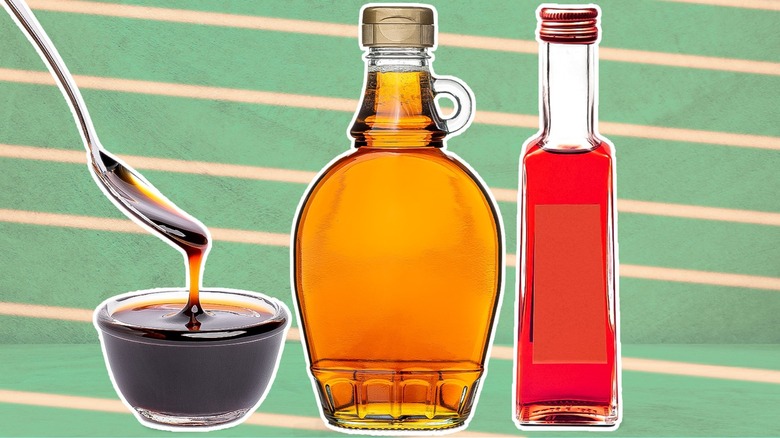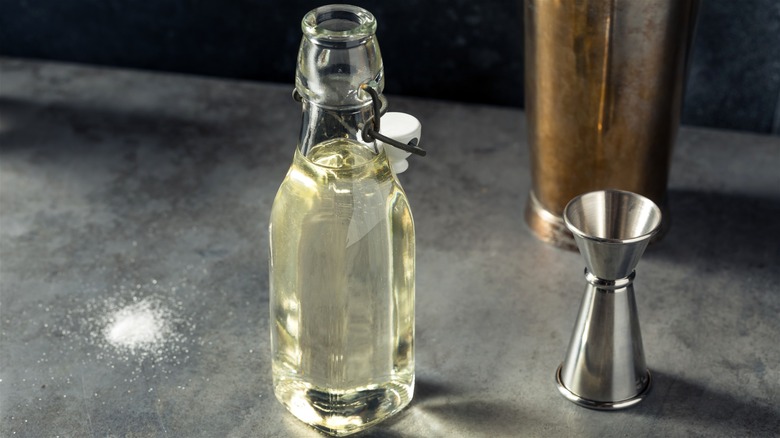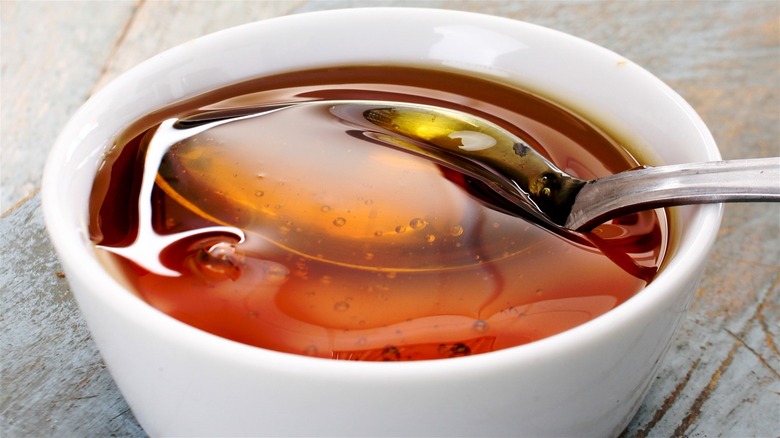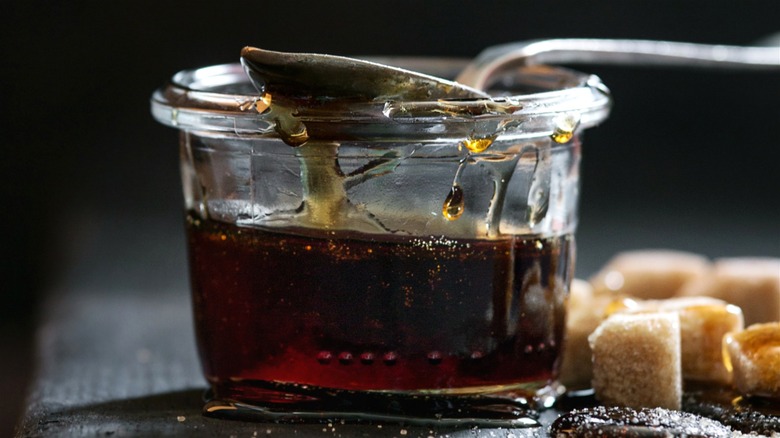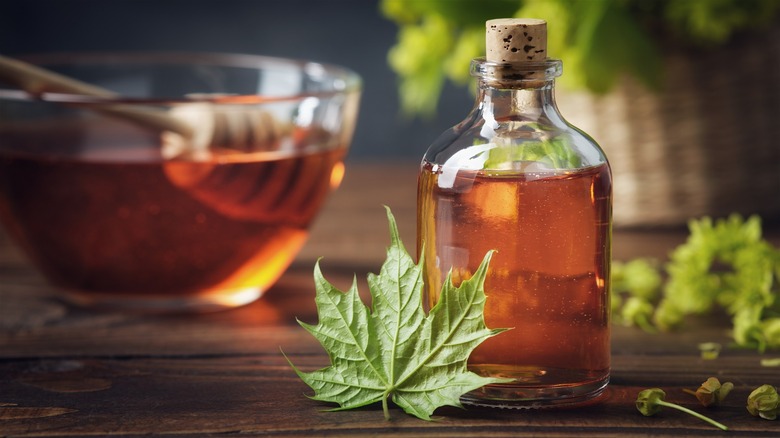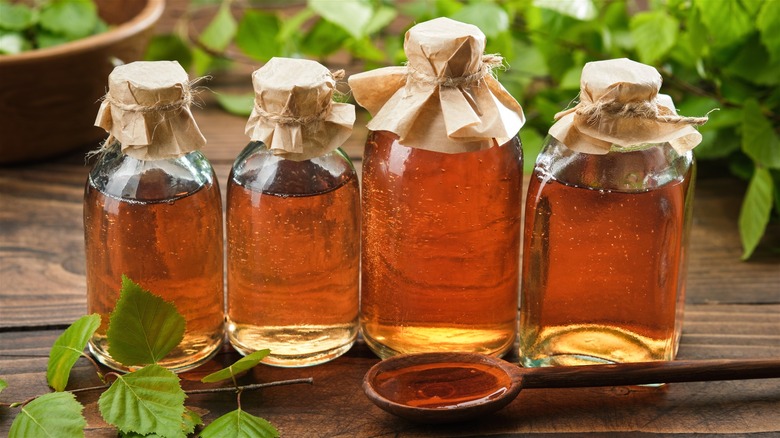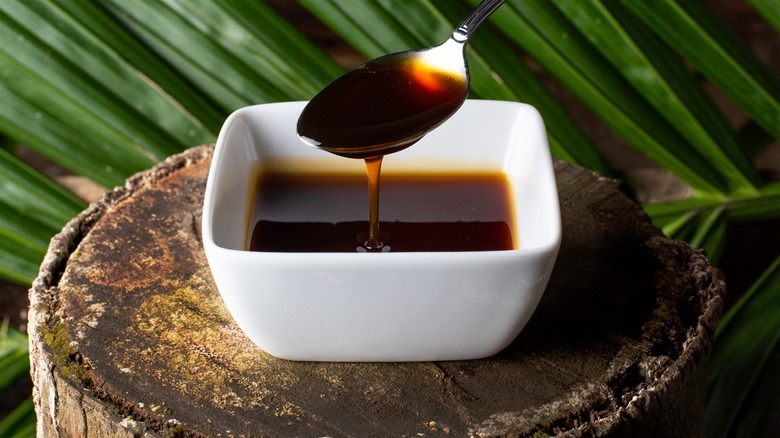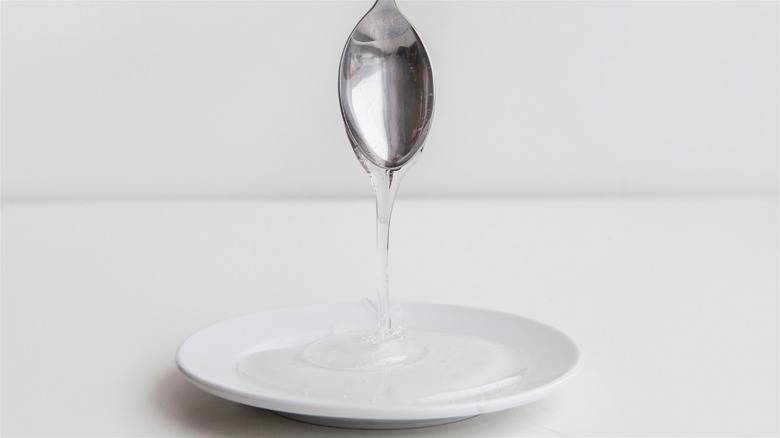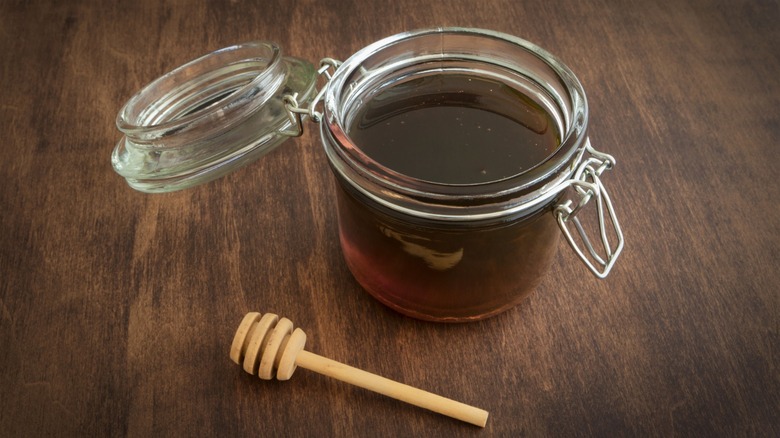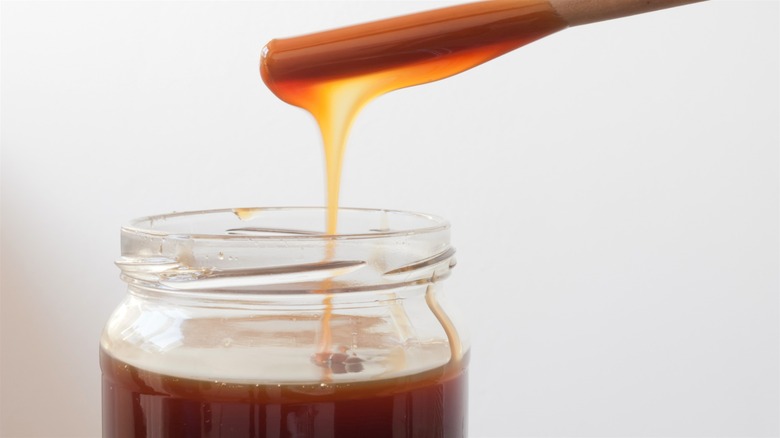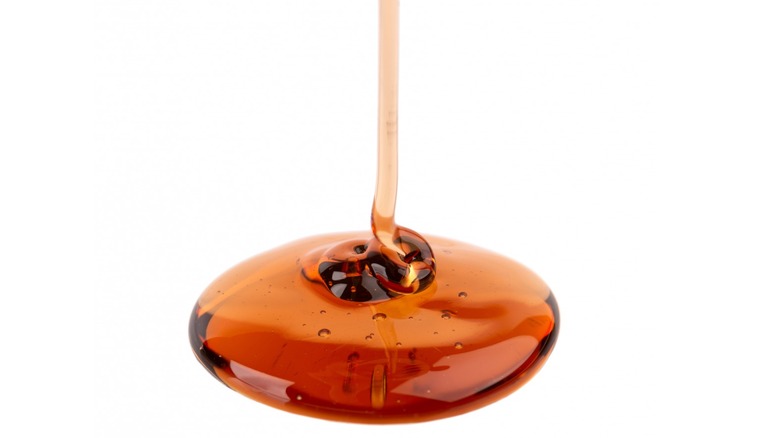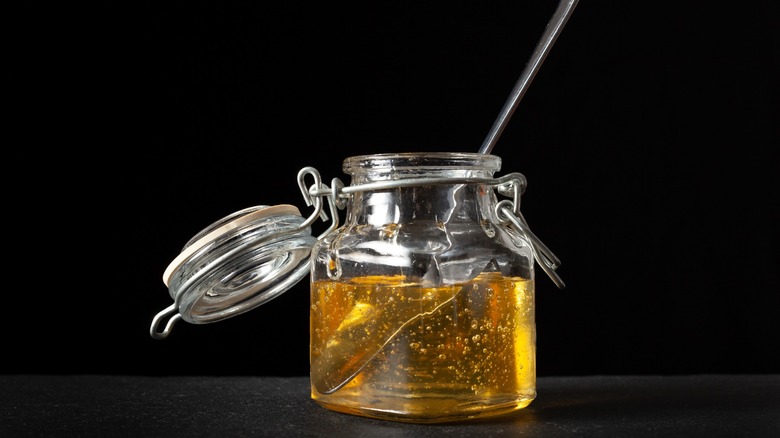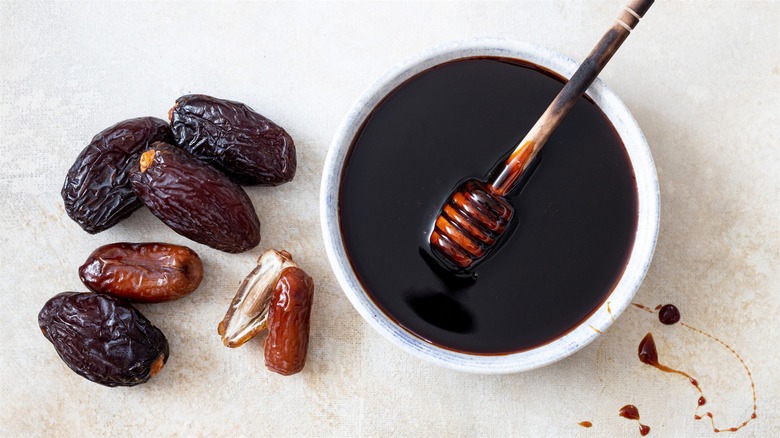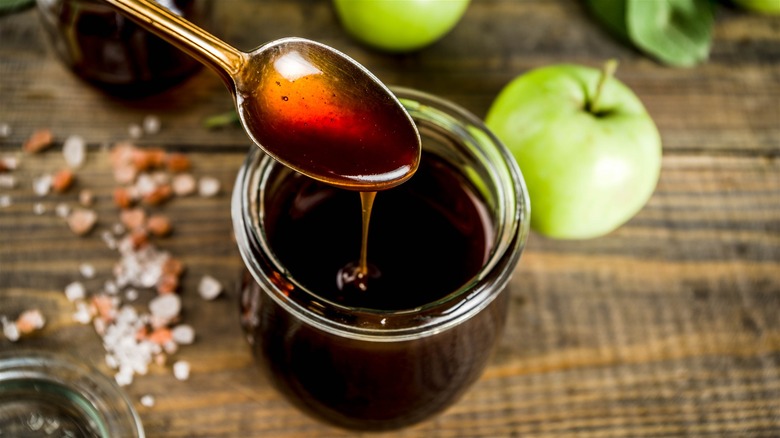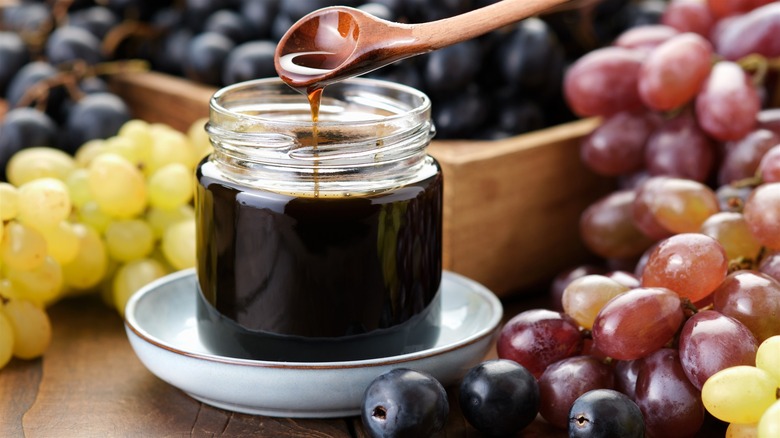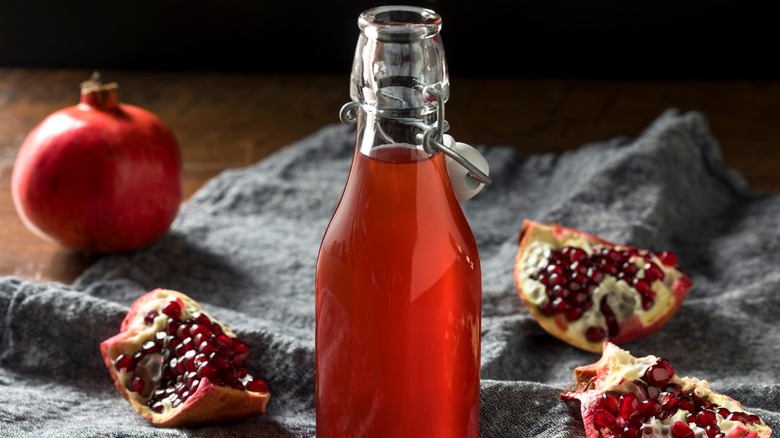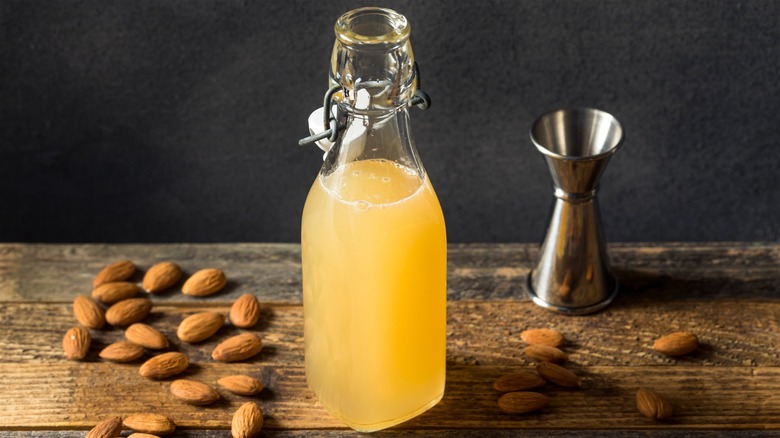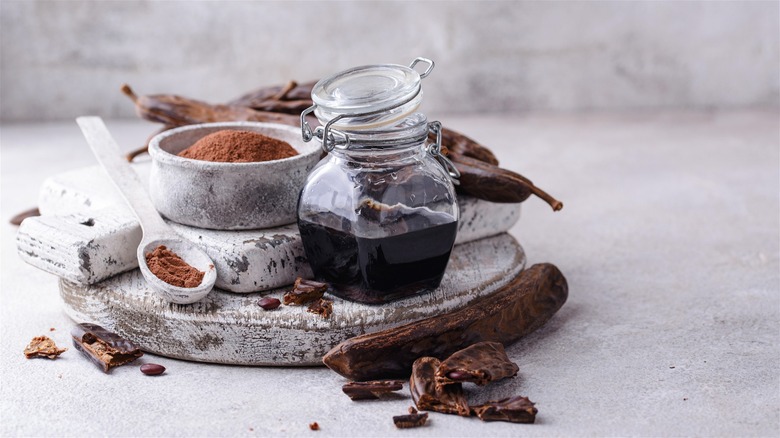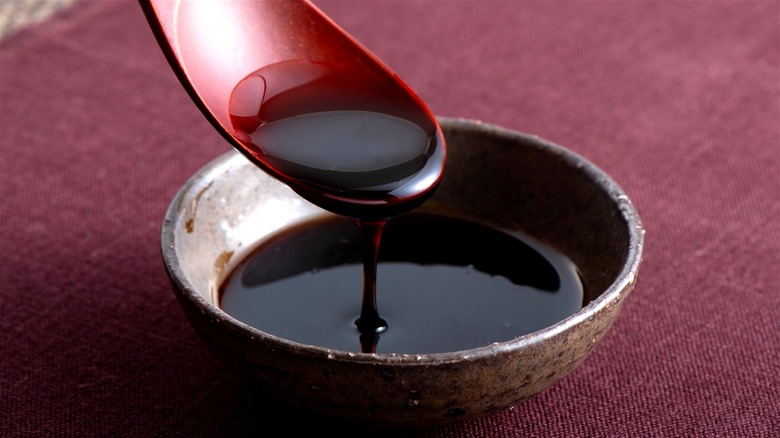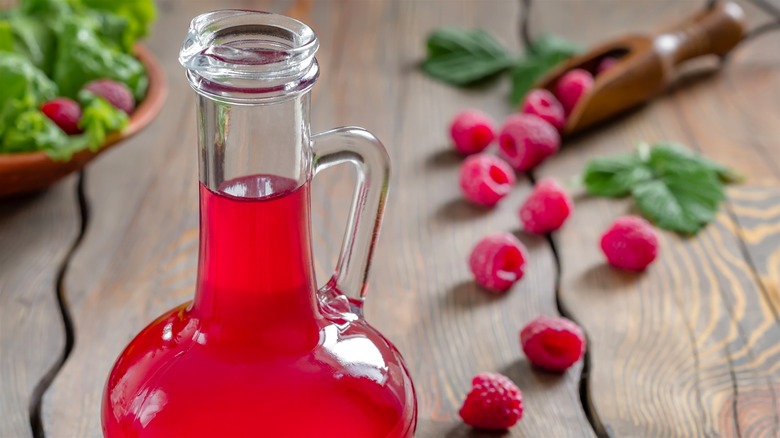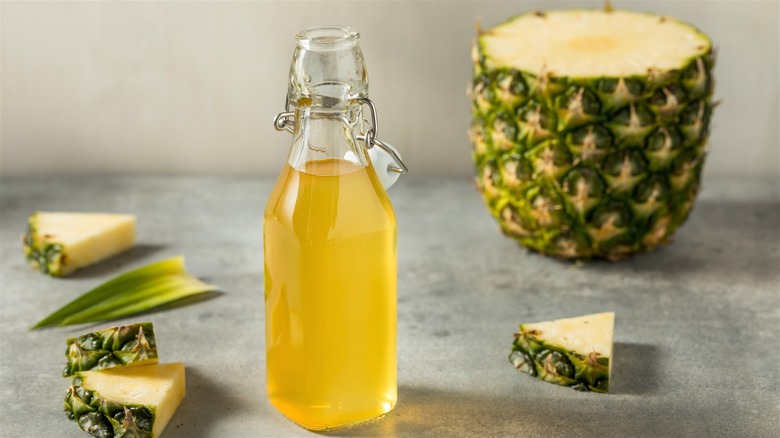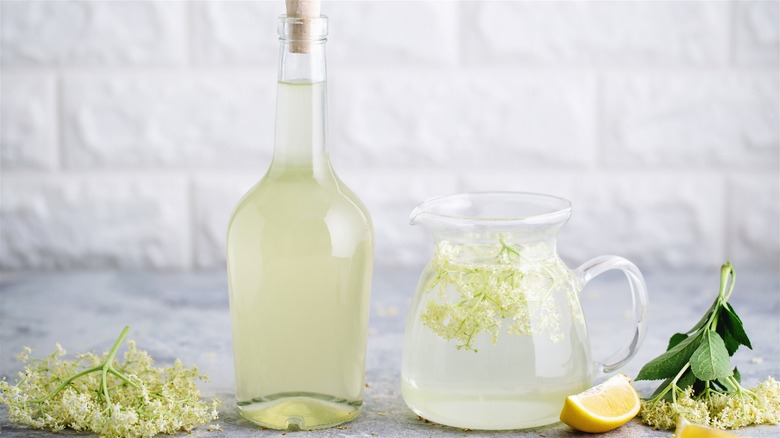21 Types Of Syrup And How To Use Them
To an untrained eye, the differences between various kinds of liquid sweeteners are indiscernible. Aren't they all made from the same thing and equally bad for you? Well, not exactly. Some have bad reputations; others are considered medicinal. Some are overused, while others can only be found on the other side of the world. Some stick to their lane, while others are universal. They come from trees, from grains, from succulents, from fruit. Their colors range from almost black to amber to clear. Most of them can replace one another one-for-one, yet possess unique histories, production methods, and applications.
The sweet world of syrups is filled with surprises. From everyone's favorite maple breakfast companion and unassuming, yet necessary simple syrup to the exotic and rare kuromitsu and miel de palma, here's how to learn the differences between common syrup kinds (as well as their similarities!), and master the art of creative and sustainable syrup-making yourself.
Simple syrup
As the name implies, simple syrup is easy to make, as it contains only two ingredients: sugar and water. The proportions may vary, but in general, it's 1:1. Rich simple syrup takes it one step further: It doubles the amount of white sugar, creating a thicker, sweeter mix. Keep in mind that the key to stabilizing homemade simple syrup is adding corn syrup, which will help prevent sugar from crystallizing.
It's a plain, straightforward liquid sweetener that can be used for a wide range of drinks as well as brushing cakes without overpowering the other flavors. To take your cocktails and ice creams to the next level, you could infuse simple syrup with nuts, fruit, or even cannabis (for which you might want to add a splash of vegetable glycerin to promote extraction).
Golden syrup
The UK's beloved syrup has been on the scene since the 1880s, when Abram Lyle, a Scottish sugar refinery owner, introduced "Goldy," a thick, amber-colored liquid left over from sugar production that became a national staple. So, if you want to live your Great British Baking Show fantasy, you'll need to get your hands on it ─ or make your own by mixing cane sugar with water and lemon juice or citric acid.
Also known as light treacle, it's the key to Harry Potter's favorite dessert, treacle tart, as well as toffee, flapjacks, gingerbread, cookies, and puddings, lending them a buttery, lightly caramelized flavor. Additionally, it can be used as a honey substitute. Just make sure not to confuse it with black treacle, which is akin to molasses ─ dark and intensely flavored.
Cane syrup
Also referred to as "light molasses," cane syrup is made from boiled-down sugarcane juice. It's prized for its light flavor with caramel and butterscotch notes but without molasses' bitter, astringent undertones. Its history is rooted in the southern United States, where it emerged as an essential sweetener, integral to the culinary repertoire of less affluent families. Beyond its traditional syrup role, cane juice once found its way into homemade beers and rock candy, offering an affordable alternative to other sweeteners.
Today, despite the decline in traditional producers, cane syrup remains a versatile, if rare, ingredient. It effortlessly replaces maple syrup on breakfast tables and molasses in baked goods. It works well in glazes and marinades, adds a sweet depth to bourbon-based cocktails, and makes an indulgent dipping sauce for fluffy Southern biscuits.
Maple syrup
Everyone's breakfast darling, pure maple syrup is made by boiling down maple tree sap. Conversely, fake maple syrup is artificially flavored, and what it lacks in depth of flavor, it makes up for in a long ingredient list and significantly lower price point.
There are plenty of unconventional ways to use maple syrup, from baking and candy-making to enhancing drinks and savory dishes with its distinct earthy and woody undertones. For example, it makes a perfect glaze for maple sesame tofu and is the key to improving hasselback sweet potatoes. Mixed with mustard, it becomes a versatile sweet-and-spicy sauce combo that can be used as a condiment or a marinade. Using it to replace simple syrup can seriously elevate a whiskey sour, deepening its flavor the way its pale, plain cousin never could.
Birch syrup
Move over, maple syrup: It's birch's time to shine. While the two are constantly compared ─ both come from reduced tree sap and have a similar hue and texture ─ they couldn't be more different in the flavor department. Additionally, the birch sap's lower sugar content demands a significantly higher volume and longer boiling times, thus considerably raising its price point. The result is a robust, less sweet flavor profile marked by earthy, caramelized tones with fruity tartness.
While not the best alternative for maple syrup, birch syrup finds its niche. It pairs splendidly with carotene-rich foods (making a creative topping for sweet potatoes), acts as a unique addition to drinks, marinades, and desserts, and can even replace balsamic vinegar in dressings. Given its cost and potent taste, use it sparingly.
Palm syrup
The practice of making syrup from tree sap is not limited to Europe and North America. In tropical countries, various palm tree syrups are used to satisfy one's sweet tooth, but you'll likely have to travel there to try them.
The Canary Islands' unique take on the syrup is known as palm honey, which was mainly used as medicine; its delicate, nutty, and fruity flavor can be appreciated by visitors of La Gomera. Sri Lankan Kithul also found medicinal uses in Ayurveda, but there's a place for its deep, smoky, woodsy sweetness in everyday food culture. And if you ever find yourself in Bengal, seek out jhola gur, or liquid jaggery. Its robust, toffee-like flavor won't overwhelm your receptors with sweetness and is best enjoyed on its own, spread over roti.
Corn syrup
Corn syrup gets a bad rap. But it's not inherently evil ─ it's just put in way too many things. High-fructose corn syrup is, anyway. Regular corn syrup ─ the one you'd use at home ─ is made from eponymous starch, which is reduced to glucose by enzymes, achieving a level, neutral sweetness.
Considering it's pure glucose, corn syrup finds lots of applications in dessert-making. Looking for a way to create a perfect glass-like cookie glaze? Corn syrup's got you covered. Unsatisfied with the texture of homemade sorbet? Replace sugar with corn syrup to add body. As an invert sugar, it doesn't crystalize over time, also making it the secret to ultra chewy cookies. It even has the power to transform marshmallows into fluff. So don't shy away from using it in your kitchen.
Sorghum syrup
Sorghum syrup is a somewhat obscure relic of Southern cooking. Originating in Africa, the sorgum plant, a grass, was brought to America via the slave trade, and quickly became the sweetener of choice in Southern homes. Often compared to molasses, it's prized for its complex, not-too-sweet flavor and affordability. Despite America's rise as a leading sorghum producer, the syrup waned in popularity with the spread of refined white sugar.
The rich, earthy, and slightly smoky taste of sorghum syrup is created by meticulously extracting and boiling down the sorghum cane juice. Sweeter and runnier than molasses, it's perfect for drizzling over buttered biscuits, enhancing baked goods, or adding depth to barbecue sauces and drinks. Embracing sorghum syrup is more than a culinary choice; it's a nod to the small farmers keeping a meaningful Southern tradition alive.
Barley malt syrup
Barley malt syrup sets itself apart with its unique composition, where maltose takes center stage, leaving sucrose and fructose found in other syrups far behind. This thick, dark syrup made from sprouted and roasted grain boasts a signature malty flavor and a subtler sweetness compared to its counterparts.
If you want your homemade bagels to turn out like the store-bought ones, barley malt syrup is the most authentic way to get there. Add it to the bagels' boiling water bath, and they'll obtain the proper brown hue and signature flavor in the oven. Otherwise, this whole grain sweetener makes an excellent (albeit less sweet) 1:1 substitute for molasses, honey, and other syrups. Give your morning cereal a boost, glaze it over roasted squash, or use it to enrich dark breads and baked goods.
Brown rice syrup
Also known as rice malt syrup, this thick, honey-hued liquid is derived from cooked rice or starch. It's mixed with enzymes such as barley malt powder or koji that break down the starches into simpler sugars, primarily maltose, leaving no fructose behind. The result is a sticky syrup that boasts a toasty and somewhat bland flavor profile compared to more intensely sweet syrups.
Often celebrated for its subtle sweetness, it can replace other sweeteners in a pinch. It makes an excellent corn syrup substitute, helping prevent crystallization in candies and marshmallows, and can be used as a vegan honey alternative. However, it's worth noting that it has a high glycemic index and is calorie-dense, making it less than ideal for those managing their blood sugar levels or caloric intake.
Agave nectar
Tequila's maternal sibling doesn't have as much of a "bad decision in a bottle" reputation, but don't be fooled by its placement in the diet section of the supermarket ─ agave isn't a healthier sugar alternative. Crafted from the sap of the agave plant, this nectar packs a fructose punch that puts regular sugar to shame. This means, when swapping one for the other, a touch is all it takes.
While agave doesn't outshine honey in the nutrition department, it's a solid stand-in for vegans craving a bit of sweetness without the buzz of bee labor. Used with a light hand, it brings a honeyed bliss to your beverages and desserts. When baking with agave, mix it with other liquid ingredients. Its high fructose content will promote faster browning, so reducing the baking temperature is equally important.
Date syrup
There's a reason dates bear the "nature's candy" moniker ─ they've been satisfying humans' sweet cravings for much longer than actual candy (or even sugar!) has been on the scene. Turning them into a natural, two-ingredient syrup was a matter of time. Blending dates with water, reducing the mixture over heat, and straining it produces a thick dark-brown liquid with trace amounts of minerals and antioxidants and a full-bodied caramel flavor. With that said, date syrup should be your go-to sweetener. Here's why.
For one, it's the sweetener you didn't know your coffee needed, complementing acidic Ethiopian varieties as well as chocolatey South American ones. It's also low on the glycemic index, making it a perfect breakfast addition. Finally, you can use it as a substitute for other sweeteners wherever a touch of caramel flavor is desired.
Cider syrup
Apple molasses, or boiled cider as it's traditionally known, is a delicious fall-themed throwback. Born out of necessity in colonial times, this thick, tart syrup was crafted by reducing fresh cider, a method devised to preserve the apple bounty without refrigeration or added sugar. As the Revolutionary War politicized sugar and molasses imports, patriotic Americans chose to rely on this homemade sweetener.
This concentrated apple essence is prized for its rich caramel sweetness, balanced out by a noticeable tang. Whether lending its complex flavor to hot toddies, elevating apple pies, or glazing over roasted veggies, cider syrup is a must-try. While still commercially produced, crafting boiled cider at home couldn't be easier. Plus, it brings a slice of New England charm into the modern kitchen, proving that some traditions are too flavorful to fade.
Pekmez
New England is not the only place to pride itself on its fruit juice reductions. In Turkey, syrups are made from a vast array of fruit, but none is as ubiquitous as üzüm pekmezi, or grape molasses, which predates sugar-based sweeteners. The filtered juice is given a calcareous treatment to reduce acidity and then boiled down. The resulting flavor is layered ─ sweet but slightly smoky and tangy, with a somewhat medicinal feel.
For inspiration on how to cook with grape molasses, look to Turkish cuisine. Mixed with tahini, it makes an absolutely delectable paste that can be used as a breakfast spread that will make you forget PB&J, or as a cake glaze. Mixed with bulgur and nuts, it creates a base for natural energy bars called üzüm tarhanası. And with plenty more uses to discover, the fun doesn't stop there!
Grenadine
The ruby syrup, found in so many popular drinks, has dominated the bar scene since the mid-19th century ─ and so have its knockoffs. This inevitably tarnished its reputation, reducing grenadine to a mere coloring agent instead of a respected cocktail ingredient. A simple grenadine recipe rarely uses much besides pomegranate juice and sugar. However, orange blossom water, pomegranate molasses, and lemon juice are optional but welcome additions.
Grenadine's distinct flavor is the capybara of the mixing world: It gets along well with vodka in a Cosmo, complements gin's herbal notes in a Singapore Sling, and makes a perfect addition to Tequila Sunrise. But no one appreciates its sweetness as much as Shirley Temple and Roy Rogers mocktails. Those tangy, floral, fruity notes are irresistible when you're using the real deal.
Orgeat syrup
Its French name hints that this syrup was barley-based initially, but the titular ingredient was dropped over time, and nuts took its place. Predictably, orgeat ─ pronounced or-zha ─ tastes nutty. Almonds are the most common choice, but peanuts, pistachios, and others provide flavorful twists and a signature creamy texture. Remember to always read the label before buying it: You don't want some artificially almond-flavored syrup to ruin your Mai Tais (and other orgeat cocktails).
If you can't find it at the store, homemade orgeat couldn't be easier to make: Whole and ground nuts or their milk can all serve as a base to be boiled down with sugar and a drop of orange blossom or rose water. Looking to make orgeat's flavor even richer? Use a blend of white and brown sugar.
Carob syrup
You might already know carob as the low-sugar alternative for chocolate. Unlike cocoa, the fruits of the carob tree are naturally sweet. The pods are sometimes roasted, then soaked or boiled until soft. Next, the strained juice is cooked down until it becomes a rich, sticky, dark brown syrup. Its slightly bitter flavor is reminiscent of chocolate but also carries an unparalleled caramel sweetness and a toasty aroma.
Carob molasses is celebrated not only for its unique flavor but also for its nutritional benefits. It's rich in vitamins and minerals and higher in antioxidants than some other syrups. It can be an acquired taste, so a little goes a long way. Try stirring it into hot, creamy beverages, or use it instead of traditional molasses for cooking, and maple and chocolate syrups for serving.
Kuromitsu
Also known as Japanese black honey, this syrup is made from kokuto or kurozato, a type of unrefined mineral-rich brown sugar from Okinawa. The process involves dissolving kokuto in water and simmering until it's thick and molasses-like, albeit with a smoother, more delicate texture and a complex flavor profile that balances sweetness with subtle bitterness.
While you could use it like any other syrup that's lining your fridge door, it's best to connect it to other Japanese flavors. For example, some types of mochi, such as kuzu or warabi, are served with a drizzle of kuromitsu, which makes up for the lack of sweetness in the dessert. In the summer, it transforms shaved ice, known as kakigori. And, of course, the unique Japanese twist on whisky sour wouldn't be the same without kuromitsu.
Shrub syrup
If you're keen on experimenting in your own kitchen, mastering the art of homemade simple syrup is essential. It's like a ray of white light hitting a prism ─ having been refracted, it transforms into many colors (or, more accurately, flavors). You can build so much on that base, starting with shrubs. The process involves simmering your favorite fruit in simple syrup and then stirring in an equal amount of vinegar.
Also known as vinegar cordials, shrub syrups can transform anything ─ from club soda to spirits ─ into a refreshing drink with a sense-awakening tang. The acidity of the vinegar cuts through the sweetness, making shrub syrups an excellent addition to salad dressings, marinades, or glazes for vegetables and proteins. Plus, it's a great way to use up distilled white vinegar.
Scrap syrups
Everyone knows about fruit-infused (or, more often, artificially flavored) syrups, but what about fruit scrap syrups? Not only are they a fantastic way to cut food waste, but they also add an inventive twist to your culinary endeavors.
Should you ever aim to make cocktail hour more sustainable, gather your fruit scraps ─ apple cores, citrus peels, bruised bits, you name it ─ and simmer them in equal parts water and sugar, allowing the mixture to reduce until it reaches a syrupy consistency. Alternatively, to make no-heat banana peel syrup, cover them with sugar and let the mixture macerate overnight, then blend and strain it. You can reuse your leftover pineapple core the same way. The result is a sweet, concentrated liquid that carries the nuanced flavors and aromas of the original fruits.
Flower syrups
Edible flowers don't last forever. But there's a sugar-coated way to extend their life: floral syrups. The process typically involves steeping the petals in a simple syrup (with flowers, sugar, and water in equal amounts), sometimes with lemon juice or citric acid, to balance the sweetness and enhance the shelf-life.
Creating flower syrups at home is a simple yet rewarding endeavor. Some accessible examples include violet syrup, with its beautiful purple-blue hue, and lavender syrup, which can be made from dried leaves, as well as syrups infused with lilac and roses. If you prefer to go all out and forage your edible flowers, you can seek out delicate elderflowers or make vegan honey from dandelions. Of course, triple-check that the flowers you're using are food-grade, and enjoy the taste of spring for weeks.
Static Media owns and operates Tasting Table and Mashed.
